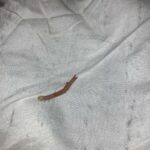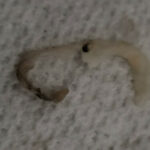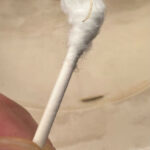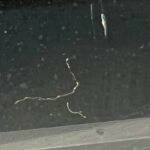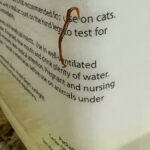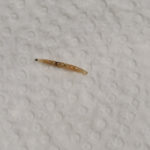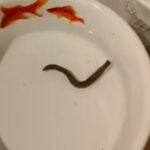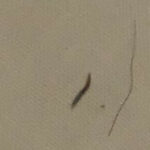Parasitic worms can find a home in the bodies of humans and animals, both domestic and wild. Dogs and cats can become infected with a number of parasitic worms ranging from ringworm to heartworm, while adults may be infected with any number of parasitic worms at any given time such as the pinworm or tapeworm. In fact, parasitic worms currently infect more than 250 million people worldwide and some are more serious than others. Some of the most serious parasitic worms are tropical parasites/worms. Some of the most well-known tropical parasites/worms include Guinea worm, hookworm, and Loa Loa eye worm or “African Eye Worm.”
About Guinea Worm
Also called, dracunculiasis (pronounced: dra-KUNK-you-LIE-uh-sis), Guinea worm is a parasitic worm infection that occurs mainly in Africa. In fact, more than half of all cases of Guinea worm disease are reported from the southern Sudan region. Each year, 1,000 cases of Guinea worm disease are also reported in countries such as Benin, Burkina Faso, Ghana, Ivory Coast, Mali, Niger, Nigeria, Togo, and Uganda. Countries where less than 1,000 cases of the disease are reported include: Cameroon, Chad, Ethiopia, Mauritania, and Senegal.
Guinea worm is more common in poor rural African villages that are not frequented by tourists. While the infection occurs mostly in Africa, the disease can also be found in Yemen, and some of the most remote villages in the Rajastan desert of India.
What causes Guinea worm?
A threadlike parasitic worm that grows and matures inside the human body causes guinea worm. The worm is called Dracunculus medinensis. Dracunculus medinensis is as thin as a paper clip and it can grow up to a staggering three feet long. Once the larvae mature inside the human body, the Guinea worm exits the body through a painful blister in the skin. This can cause long-term suffering and oftentimes, crippling aftereffects.
How is Guinea worm contracted?
People may become infected with Guinea worm after drinking standing water that contains a tiny water flea. The flea might be infected with the tiny larvae of the Guinea worm. The tiny larvae pierce the intestinal, mature into adulthood, then mate during the course of a year. Once the males die off, the female makes her way through the body where she will grow up to as much as three feet. The female will eventually end up near the surface of the skin, typically in the lower limbs.
Symptoms of Guinea worm
Guinea worms cause intense swelling and painful, burning blisters. In most cases, the infected will seek out water to soothe the pain. In poor rural African villages, “water” usually means nearby ponds and wells. Once the sufferer enters the water, the blisters will burst and the worm will emerge releasing millions of new larvae into the water. Once the larvae have been released into the water, tiny water fleas then swallow them and the vicious cycle starts all over again.
Other symptoms of Guinea worm include: fever and infection. Most symptoms of Guinea worm do not develop until a year after a person has ingested contaminated water.
Guinea worm diagnosis and treatment
Guinea worm can be detected by sight. The adult worm can be seen protruding from a skin sore. While there is no cure for Guinea worm or medications to prevent infection, there are several methods to remove the worms. The Guinea worm can be removed a little at a time by winding it around a small stick and pulling it out. In some cases, the process will take only a few days, in others it might take a few weeks or even a few months. In some cases, Guinea worm can be surgically removed before the actual wound begins to swell. Antibiotics and antihistamines may be used to reduce swelling and make removal of the worm easier.
After a Guinea worm is removed, many people are left with permanent scarring and/or permanent crippling. Unfortunately, most people in infested villages will continue to contract Guinea worm disease year after year.
How to prevent Guinea worm
Guinea worm infection can be avoided by using only filtered water or water that has been obtained from a safe source. Even water from ponds and wells can be boiled and filtered through cloth to kill the Guinea worm larvae. Water can also be treated with a larvae-killing chemical. In addition, people with open Guinea worm wounds should stay away from ponds or wells that are used for drinking water.
About Hookworm
Hookworm or “Hook Worm” is an intestinal parasite that can infect humans and animals. The hookworm species most common to humans is Ancylostoma duodenale (an-cy-CLO-sto-ma doe-AH-den-al) and Necator americanus (ne-KAY-tor am-er-i-CON-us). These species can be found around the world, but are primarily found tropical or subtropical climates. In the United States, hookworm can be found in the Southeastern United States. While hookworm can be found in the Southeastern states, it is important to note that the species is very well controlled. This means that it is no longer a common occurrence in the U.S.
If you have a hookworm infection, you may have become infected from direct contact with contaminated soil, possibly by walking barefoot or you may have accidentally swallowed contaminated soil. Feces from an infected person or animal may contaminate soil or “night soil” (commonly used to fertilize crops) can carry hookworm eggs. If the conditions are warm and moist, the eggs will hatch into larvae.
The larvae are not visible to the naked eye. So if you’re walking barefoot through the soil, you will not see the larvae on your feet. According to OptumHealth, “the larvae will bore through the skin and ride through the lymph circulation to the right side of the heart. The larvae are then pumped into the lungs. There they bore into the tiny air sacs (alveoli) of the lungs. Their presence within the lungs usually causes enough irritation to produce coughing. The larvae are coughed up into the throat and mouth, and are then swallowed and passed into the small intestine.” The journey typically takes a week. Once the larvae reach the small intestine, they develop into half-inch-long worms. They attach themselves to hosts intestinal wall and they suck the blood, usually between 0.03-0.2 ml of blood per day. A single adult worm can live for up to 14 years in the infected person’s intestine.
Children have the highest risk of hookworm infection because they play in the dirt and they are barefoot more often than adults. Fortunately, hookworm is not spread person to person. Symptoms of hookworm include:
- Rash
- Itching
- Anemia
- Abdominal Pain
- Diarrhea
- Loss of Appetite
- Tiredness
- Difficulty Breathing
- Weight Loss
Severe hookworm infections can cause stunted growth and mental development, protein deficiency, and congestive heart failure.
If you think you may have hookworm, contact a physician immediately. The physician will take a stool sample to identify hookworm. Once a diagnosis is made, your physician will prescribe antibiotics to kill the infection. Treatment typically lasts 1-3 days. If you have anemia as a result of hookworm infection, your physician may prescribe iron supplements.
The best way to prevent hookworm is to refrain from walking barefoot in soil. It’s best not to make direct contact with soil using your hands as well. Wash all fruits and vegetables thoroughly remove of any soil residue.
It is important to keep in mind that the vast majority of the more than 1.3 billion hookworm infections reported each year occur in underdeveloped countries. This does not mean that you cannot become infected if you live in say, France or the U.S. It just means that it is less likely to occur in countries such as these.
All About Worms is always free, always reader-supported. Your tips via CashApp, Venmo, or Paypal are appreciated! Receipts will come from ISIPP Publishing.



